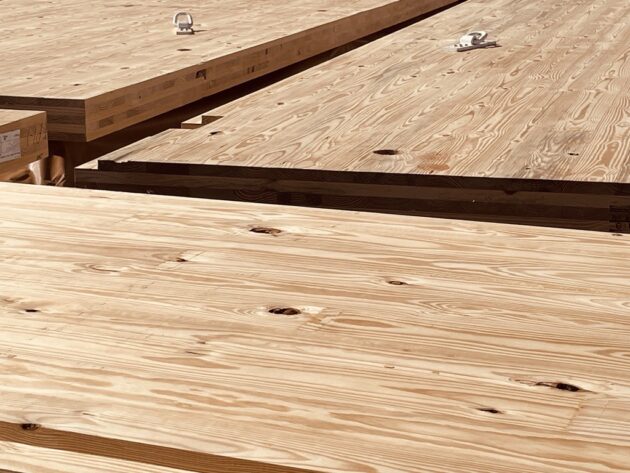Microsoft tries to whittle down its carbon footprint by building data centers with engineered timber
Tech heavyweights are in hot pursuit of clean energy sources to power their data center operations while reining in climate impacts. But they also need to put their data center infrastructure on low-carbon diets, moving away from traditional steel and concrete.
Microsoft today announced that it’s building two data centers with engineered timber products that are climate friendly, sustainable, strong and fire resistant.
“This is just part of our giant, company-wide mobilization to accelerate the decarbonization of our data centers,” said Sara Neff, Microsoft’s partner/general manager for sustainability, cloud operations and innovation.
These are the first Microsoft data centers to use the timber product, and it could be the first use of engineered wood at any large-scale data center, the company said. The material is made from sheets of timber that are stacked so the wood grain alternates direction with each layer and then is bonded together.
The facilities are being built in Northern Virginia, which is part of a regional hub for cloud computing and storage operations. They’ll include cross-laminated timber for the floors and ceilings of the two-story buildings. The structures will also use steel and concrete. The company could not provide an estimate for when construction would be completed.

The carbon footprint for the two facilities’ building materials will be 35% lower compared to a similar facility built mainly of steel, and 65% lower than one made mostly of a precast concrete.
The Redmond, Wash., company has set ambitious carbon targets for itself, aiming to become carbon negative by 2030. But its emissions — and its profits — are growing thanks in part to its expanding data center construction and operations. It has more than 300 data centers worldwide.
To help reach its climate goals, the company launched a $1 billion Climate Innovation Fund four years ago for investing in climate startups, many of which are developing products that directly support Microsoft’s decarbonization efforts.
In the construction space, fund recipients include Stegra (formerly H2 Green Steel) and Boston Metal, which are using clean power for steel manufacturing. Microsoft has also invested in low-carbon concrete startups such as CarbonCure, which locks carbon dioxide in concrete; and Prometheus Materials, which harnesses microalgae in concrete production.
Microsoft is already using CarbonCure products at some of its data centers and will test a small amount of Prometheus’ cement in the Virginia project.

Amazon, a key competitor and fellow Washington-based company, is likewise pursuing lower-carbon construction technologies for its data centers. Through its Climate Pledge Fund, Amazon has also invested in CarbonCure and a green concrete company called Brimstone, as well as the lower-carbon steel manufacturer Electra.
This month Amazon announced an investment in Paebbl, a company that turns carbon dioxide into a mineral product that can be used in construction, trapping the carbon. Amazon plans to test the material in one of its European data centers.
Microsoft’s Neff couldn’t say when the company will next use cross-laminated timber for construction or how many data centers it plans to build in the next year. One of the difficulties of using the wood product is many builders lack experience working with it. The material is expected to add to the construction costs in Virginia, but Neff couldn’t say by how much. Even with the challenges, the company won’t close the door on engineered timber.
“We’re really excited about exploring this for future projects,” Neff said. “We can’t commit to saying we’re going to use it here or there, but it’s definitely going to be an important tool in our toolkit going forward.”
RELATED COVERAGE: Fire resistant, quake safe, climate friendly: Mass timber is on the rise as a construction alternative

